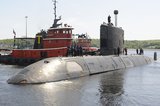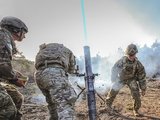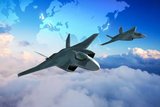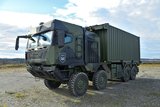How has Russia progressed with the development of a nuclear anti-satellite weapon?
USSF-52 carrying a X-37B Orbital Test Vehicle. (Photo: US Space Force)
Recent US government reports have claimed that Russia has been rapidly progressing with the development of a nuclear anti-satellite weapon (ASAT), however, it is not clear at what stage this programme currently is. This uncertainty has led the US Congress towards pressing the Biden administration to release additional classified information related to Moscow’s advancements in this domain.
The Pentagon confirmed that the Kremlin launched a low-Earth-orbit (LEO) satellite that could be a counter-space weapon capable of attacking other space assets. The Russian capability was positioned in the same orbit as US government satellites.
Eastern European news outlets also reported that
Access this article and other Decisive Edge Newsletter news content with a free basic account
You will also get one free Premium News article each week
Already have an account? Log in
More from Decisive Edge Newsletter
-
![Final two contenders for key £2 billion British Army training contract selected]()
Final two contenders for key £2 billion British Army training contract selected
The two remaining bidders for the flagship Army Collective Training Service (ACTS) contract will move on to the next 20-week phase to select the British Army's Strategic Training Partner.
-
![Cubic tailors mortar simulator for the US Army]()
Cubic tailors mortar simulator for the US Army
The company’s mortar trainer received improvements based on soldier’s feedback.
-
![I/ITSEC 2024: Zeiss introduces Velvet 4K SIM projector for night flight simulation]()
I/ITSEC 2024: Zeiss introduces Velvet 4K SIM projector for night flight simulation
The next-generation platform is motion-compatible and can be used in OTW and NVG applications.
-
![I/ITSEC 2024: Babcock Immersive Training Experience debuts in US]()
I/ITSEC 2024: Babcock Immersive Training Experience debuts in US
Named BITE, the system simulates the battlefield environment with multiple sensorial stimuli.
-
![What Saudi Arabia’s GCAP involvement could mean for the UK]()
What Saudi Arabia’s GCAP involvement could mean for the UK
Analysts have said that making space for the country in the sixth-gen fighter aircraft initiative could give the UK a chance to ease the financial burden of the aircraft’s development.
-
![Rheinmetall locks in $950 million purchase of US company to strengthen position]()
Rheinmetall locks in $950 million purchase of US company to strengthen position
Rheinmetall is working to open up the US market and the potential billions of dollars on offer. In order to get in the door it has purchased engineering company Loc Performance Products.



























